
Biblio-Theopolis
Cultural center in Hellinikon, Athens | Thesis | Instructor: Cecil Balmond, Ezio Blasetti | Scripting Partner: Yuheng Ouyang
This project is a cultural center proposing a hybrid program between a monastery and a library. research on the growth and anamorphosis of solid-void relationship in architecture.
The solid-void interpretation is based on cellular automata, which is a discrete model studied in computability theory, mathematics, physics, complexity science, theoretical biology and microstructure modeling. Cellular automata are also called cellular spaces, tessellation automata, homogeneous structures, cellular structures, tessellation structures, and iterative arrays.
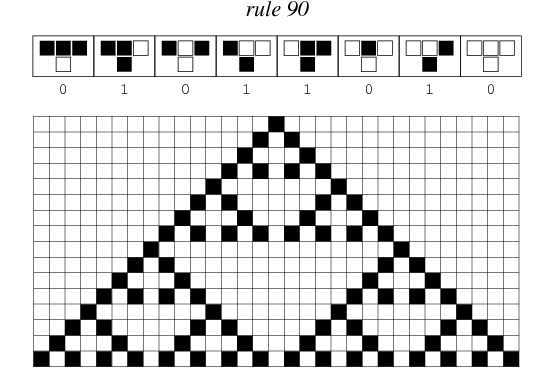
1D cellular automaton: ruleset 90
On the diagram above we can see one of the rules from elementary cellular automaton, which is a generative algorithem that calculates the statues of cells generation by generation.A row reprensents a generation, and each cell's color on this row is decided by its three upper neighbors.
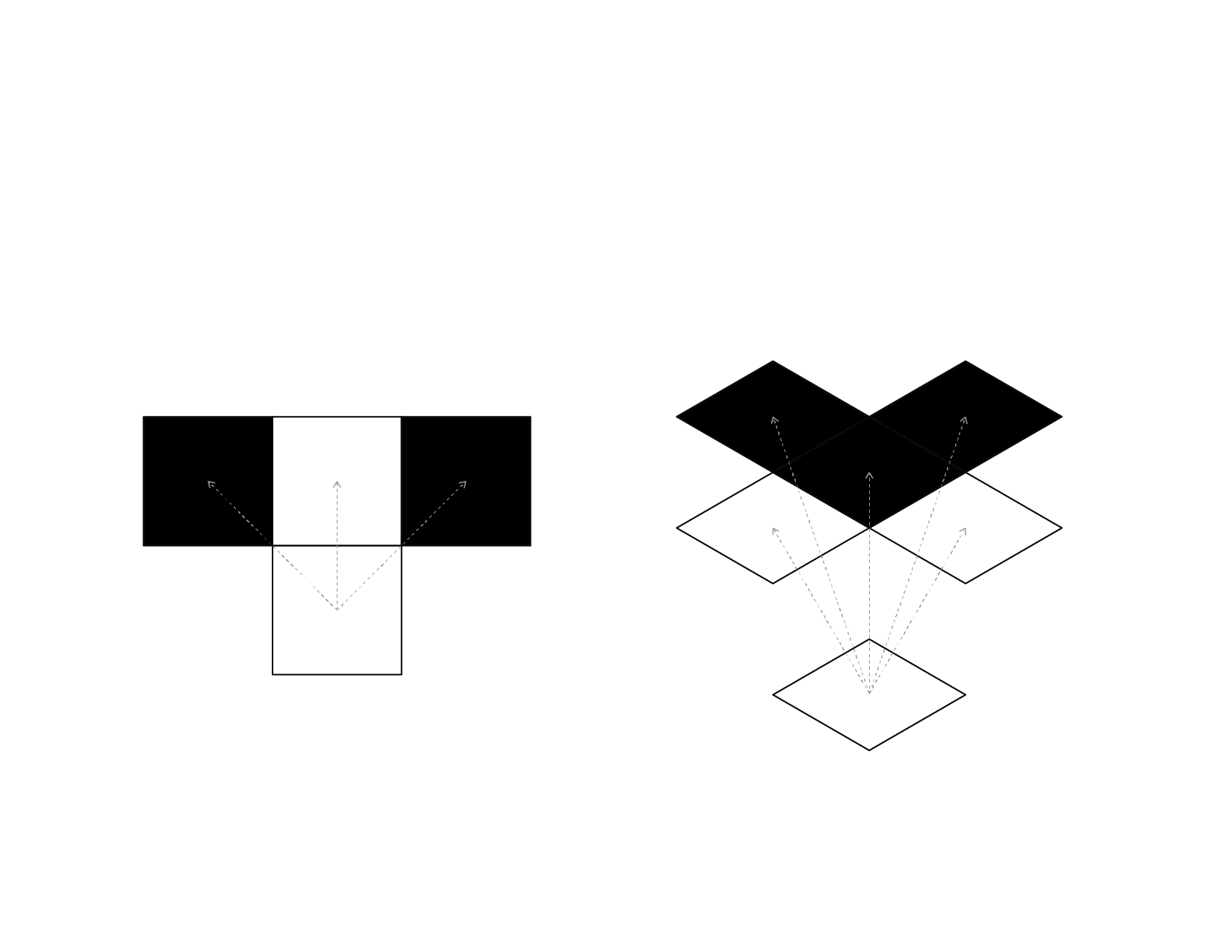
Dimension Raising: 1D to 2D CA
When expanding the ruleset from 2D to 3D. Each cell's color is decided by 5 neighboring cells on the upper plane.

i. 2D CA within 25x25 boundary
4 patterns are selected as plans from 128 iterations for potentially spatial and program wise maeningful. No.59 and no.89 have a solid-void relationship which enables an experience like walking through a library of layer and layers of bookshelves. No.65 and no.86 enables a big gathering space religiously or spiritually.
ii. CA boundary condition growth
Generation of the enclosure of each space. The center of the CA is being annealed so it won't change during this step. The different property of the boundary conditions influence the further growth. "Atlas Plans" showing the potential of each space appears after 24 iterations of growth.

freezing on generation 59 ; 24 iterations

freezing on generation 65 ; 24 iterations

freezing on generation 86 ; 24 iterations

freezing on generation 89 ; 24 iterations

iii. CA boundary condition collision
When 4 original plans grow juxtapose to each other. Their boundary impact each other and fill the space between them. The in-between space they generate depends on their distance from each others.
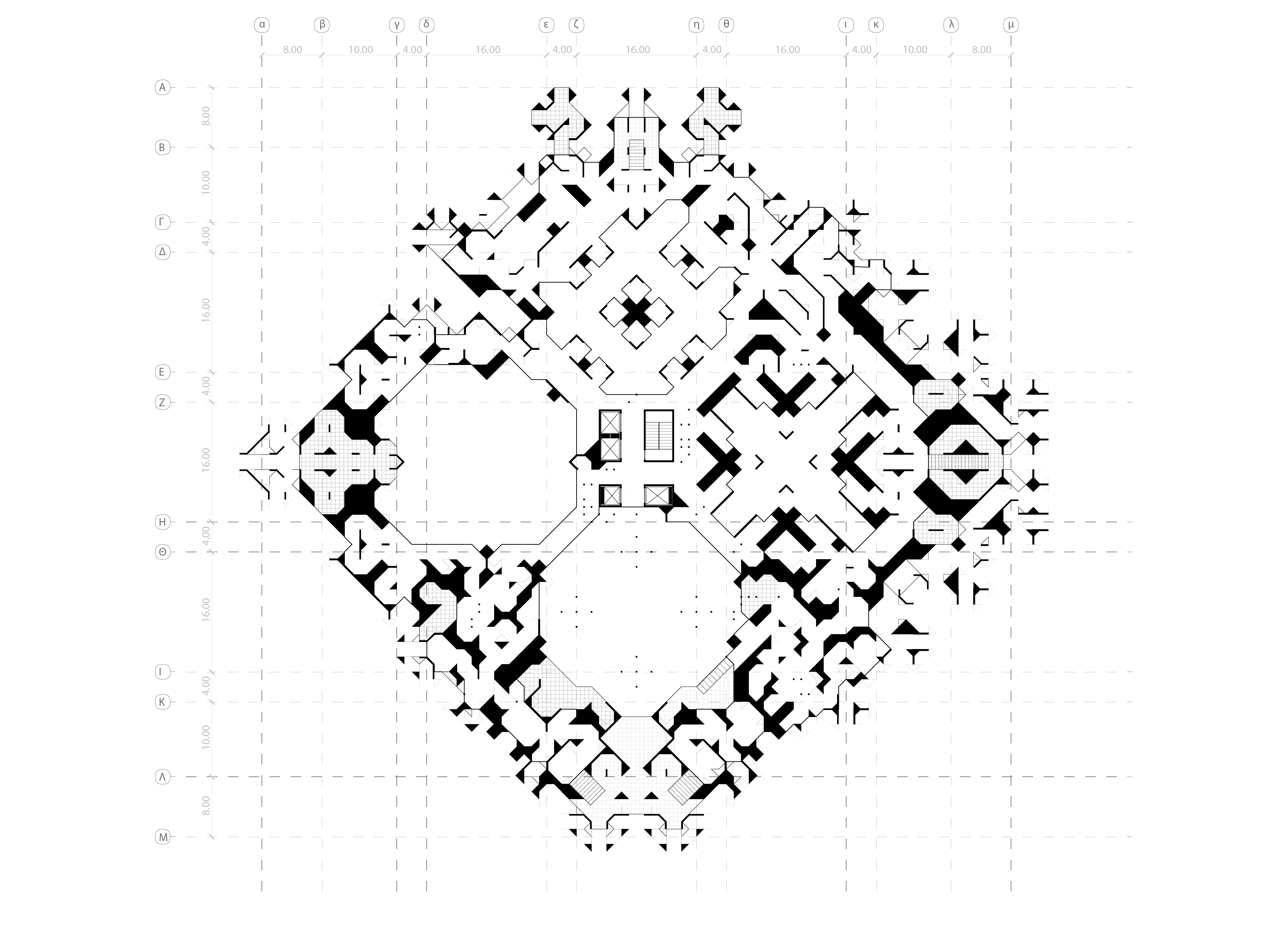
iv. L.24 Plan: Binary, Basilica, Orderly, Collective, Grand
4 plans involve in the growth at different level to enable the result in the last step. The L.24 plan is a binary program of library & monastery juxtapose to each other. The space is dedicated for cultural or religious assembly.
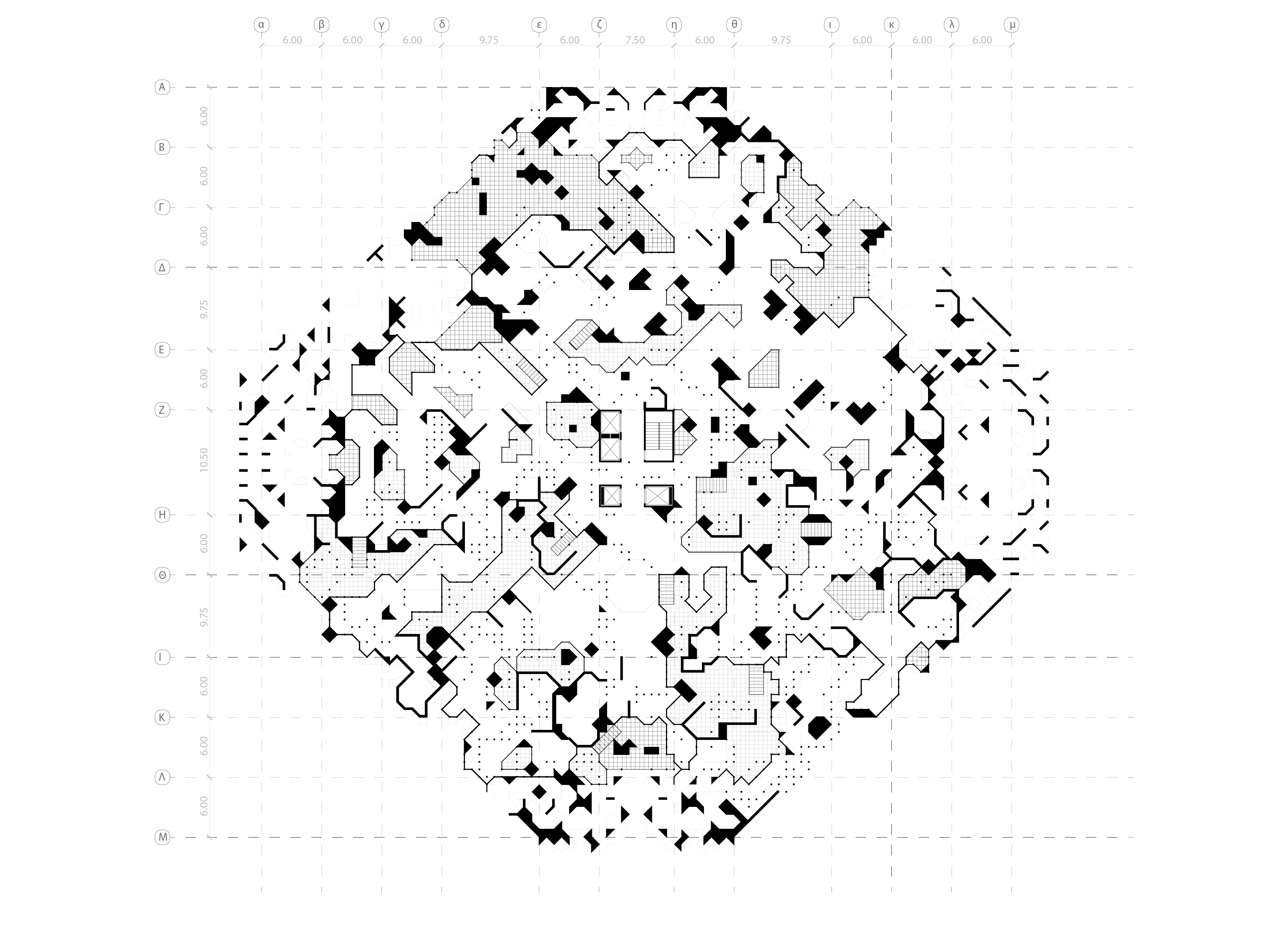
v. L.36 Plan: Hybrid, Labyrinthine, Chaotic, Individal, Intimate
When the CA continues to grow with the boundary restricted to L24. The space will gradually become chaotic while the grand programme of the 4 plans will be merged, mixed and break down for more individual activities such as mediation.
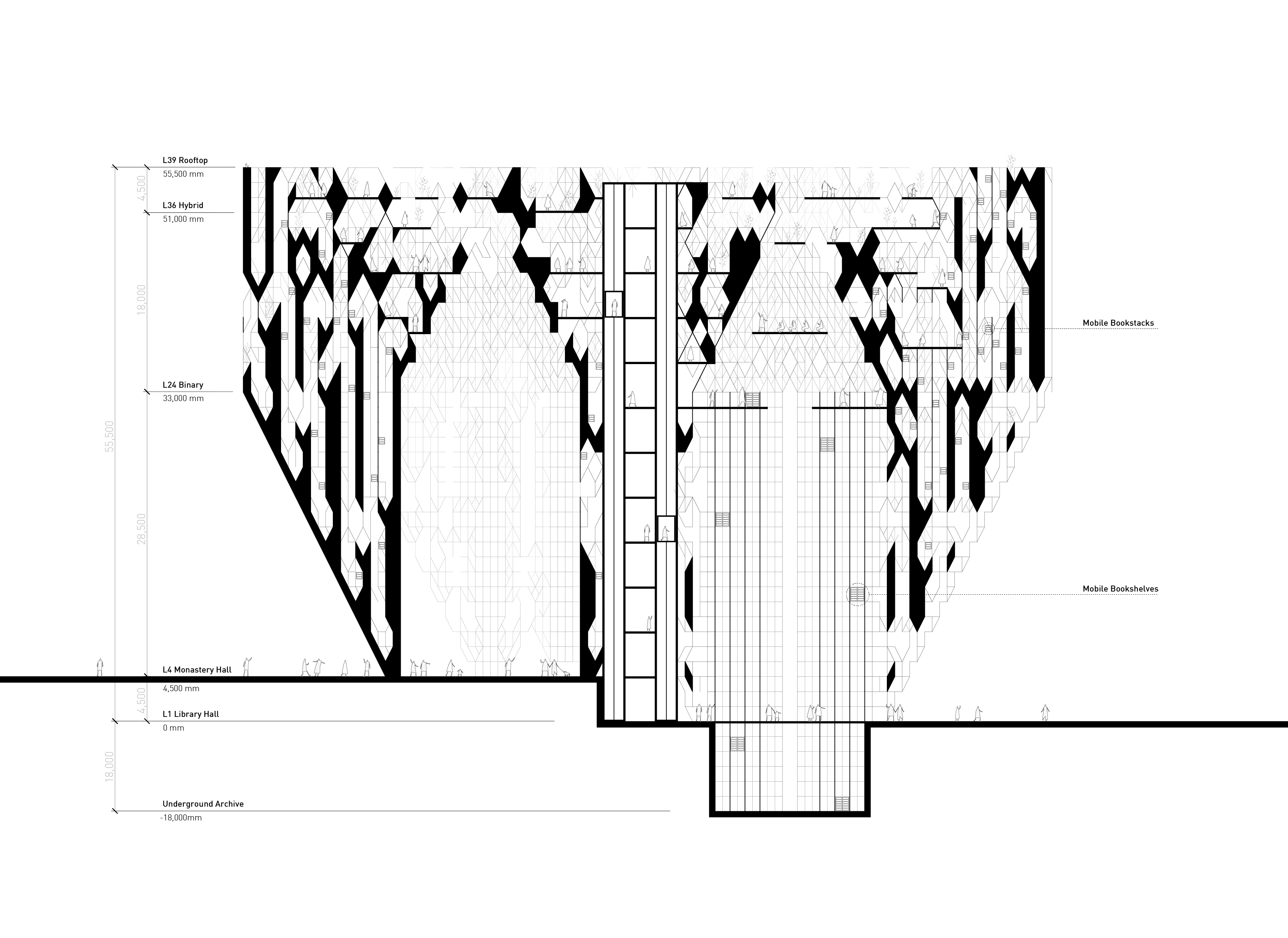
vi. Vertical stacking of the 2.5D CA
The Layers are stacked by generation. The layer begins to grow become the bottom. Spacing of cells are designed different in dimension horizontally and vertically (1:1:2) considering both overall building volume and humanize space utilization. The module of a cube consists of 8 cells is 750mm x 750mm x 1500mm.
The solid-void relationship in the section indicates the solid/poche space is turned into book storage or infrastructure for the building. Meanwhile, the void space is divided by its spatial quality. The vertical space become the duct of the mobile bookstacks and bookshelves that transfer book stored in the book storage poche to readers, while the horizontal become the space for them to pass or stay.
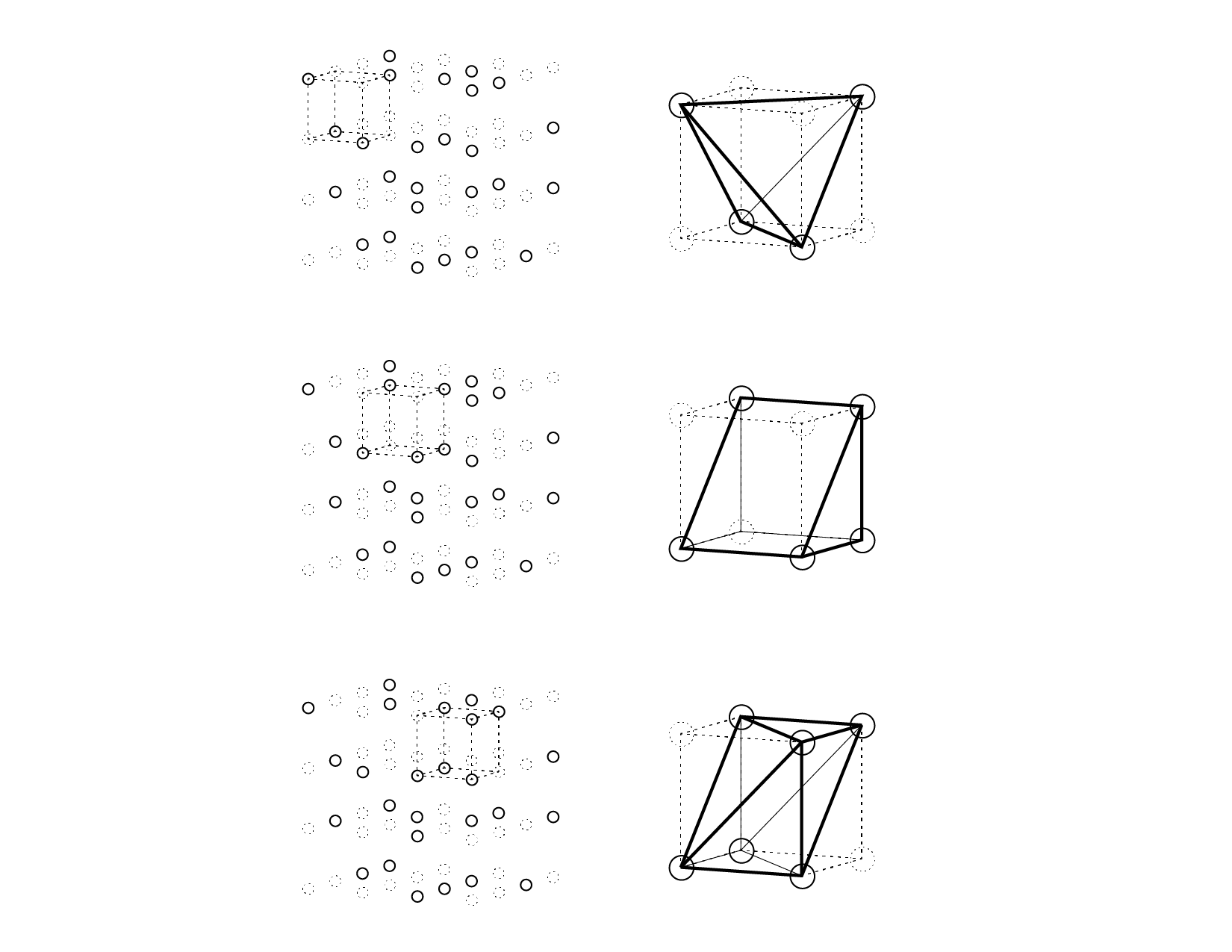
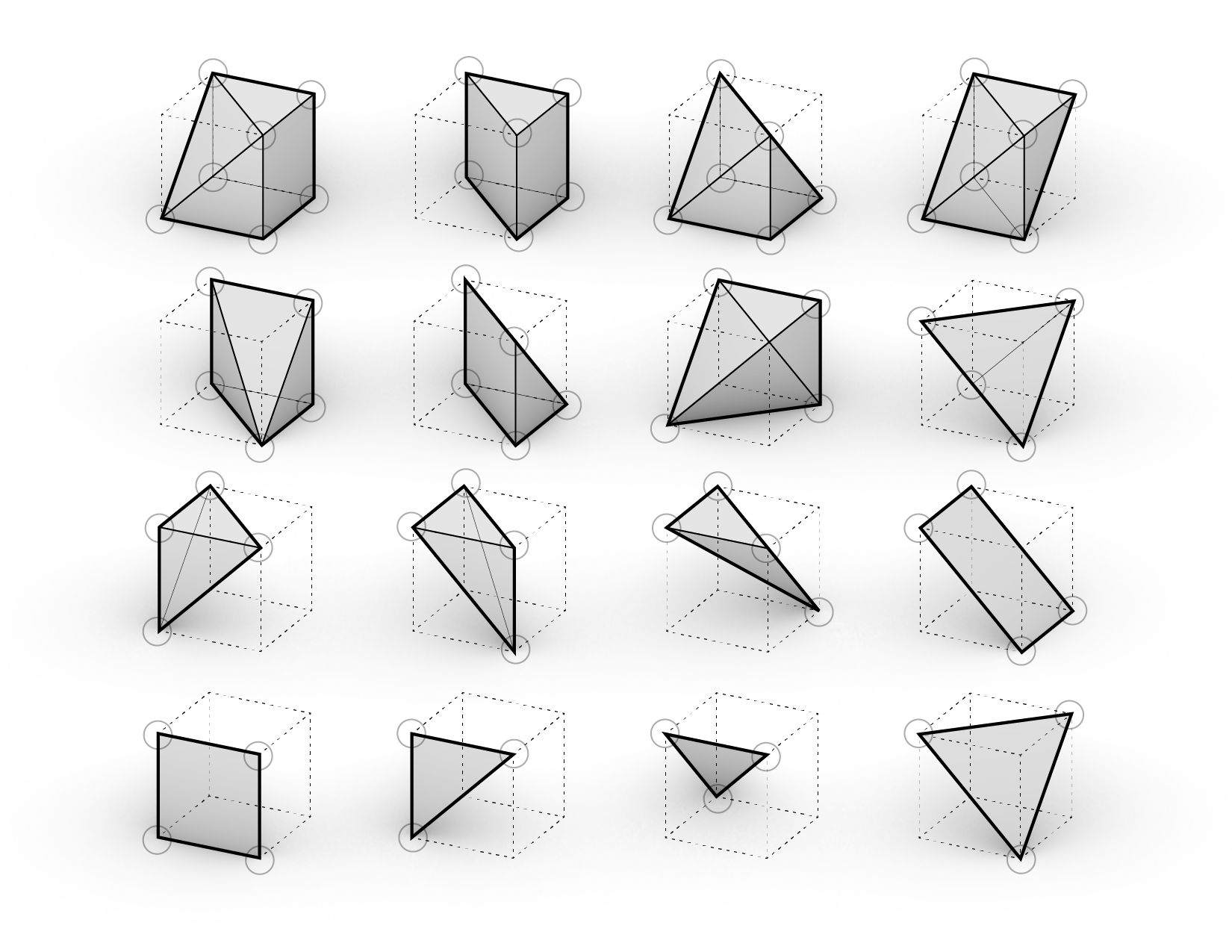
vii. Cell substantialization
The module of a cube consists of 8 cells adjacent is being interpreted into 3D volumes and surfaces. The solid cells are finally technically being connected and substantialize, which solidify the massing of the building into a continuous solid.

Exterior Render

Looking zenith at the monastery hall (Pure Geometry)

Looking zenith at the monastery hall (with Suggested Program)
BACK